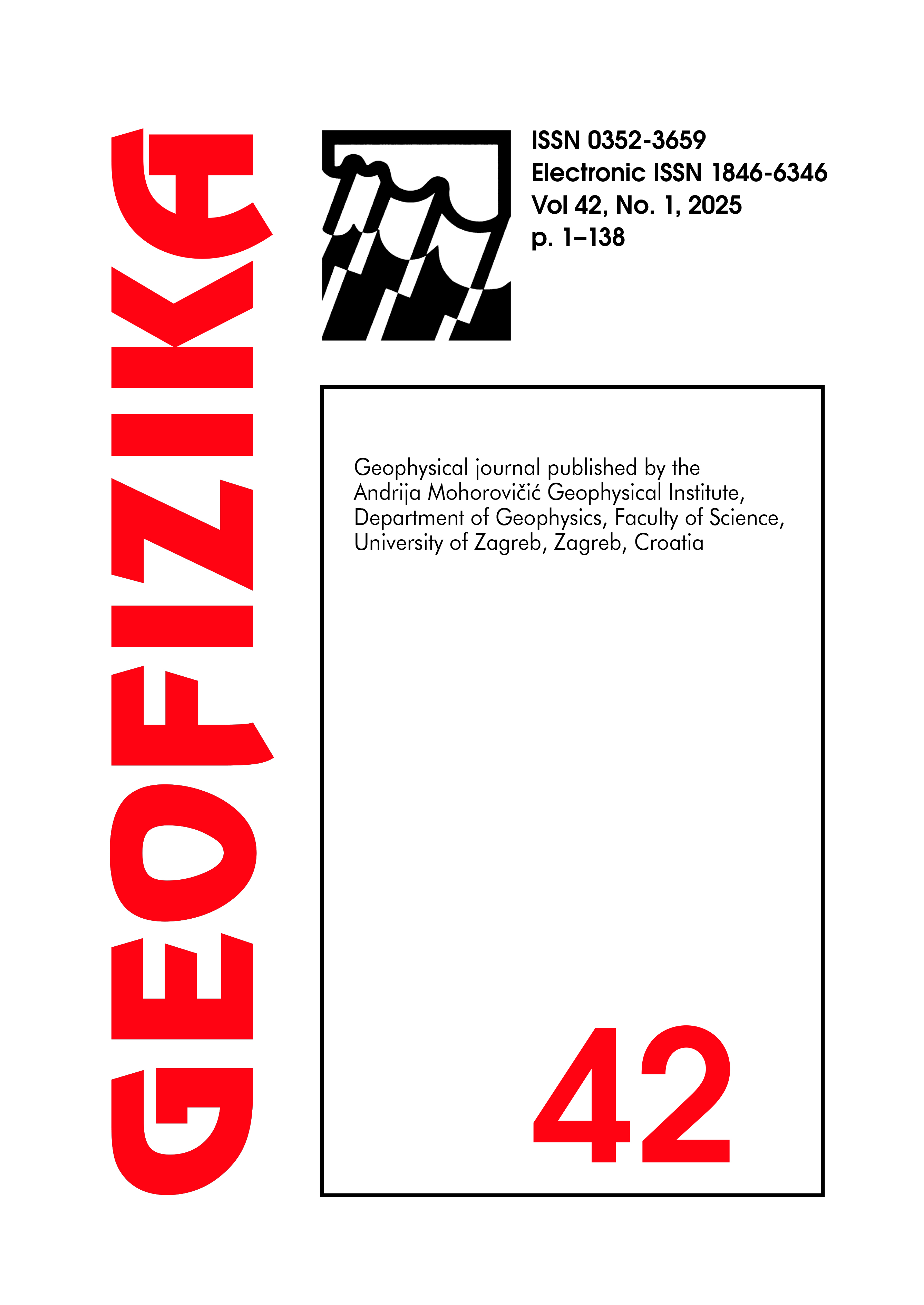Research on applying deep learning technology to classify earthquakes and blasting events using a Lightweight Convolutional Neural Network
DOI:
https://doi.org/10.15233/gfz.2025.42.2Keywords:
deep learning; classification; earthquake; blasting; CNN-convolutional neural networkAbstract
This paper proposes a lightweight convolutional neural network model to identify the types of natural earthquake and blasting events quickly and accurately. Since an event is generally recorded by several stations, it is necessary to preprocess and classify the data based on the event beforehand. This ensures that different station waveforms of the same event do not appear in any two of the training sets, validation sets, and test sets. With the three-component waveforms recorded by stations after preprocessing as the input, the network model and hyperparameters are optimized by analyzing the average and variance in the accuracy and loss values of the verification set in the fivefold cross-validation, and the accuracy and loss curves in the training process. Finally, the classification results of all stations that achieve a certain signal-to-noise ratio for each event are taken as the output of this event type based on the principle that the majority prevails over the minority. This study uses 2,190 natural and blasting events recorded by the Hainan Seismic Network before August 2022, which includes 53,067 waveforms, to train and test the effectiveness of the model. Twenty percent of those events are selected randomly as the test set. The results showed that out of 438 randomly selected events, 427 were correctly identified, resulting in an accuracy rate of 97.48%. Specifically, the accuracy rate for seismic events was 95.59%, with a recall rate of 89.04%, while the accuracy rate for blasting events was 97.84%, with a recall rate of 99.18%. In conclusion, the convolutional neural network model proposed in this paper can rapidly and accurately identify natural and blasting types in Hainan.
Downloads
Published
Issue
Section
License
Copyright (c) 2025 G e o f i z i k a

This work is licensed under a Creative Commons Attribution-NonCommercial 4.0 International License.

